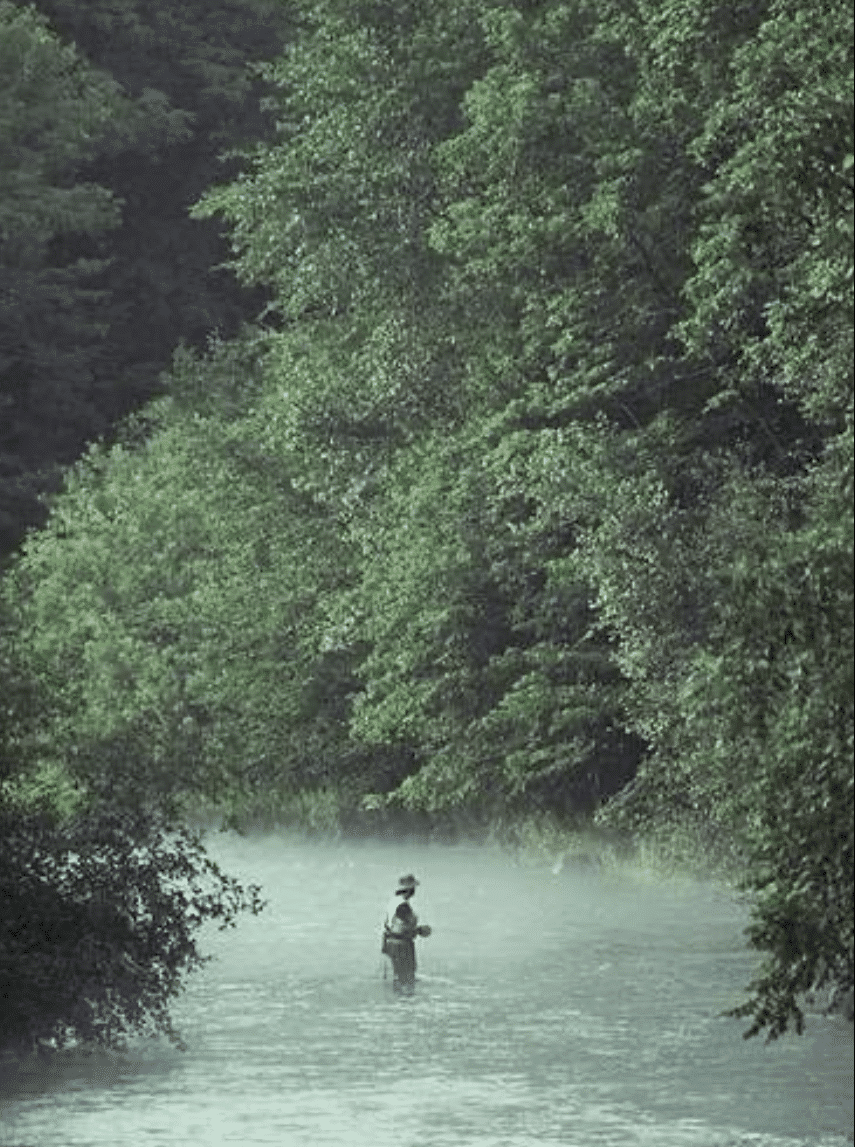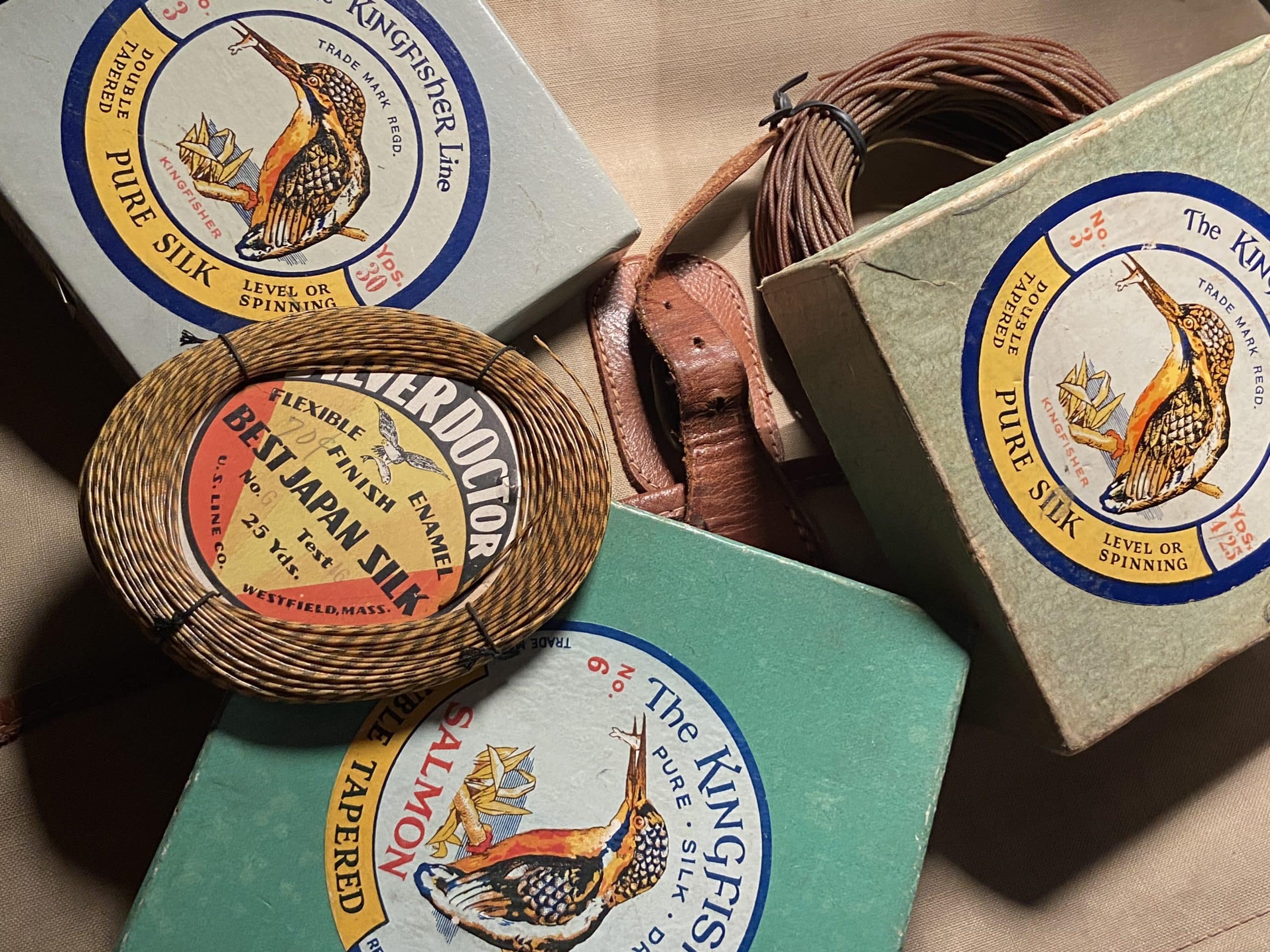
Natural silk fly lines
Natural silk fly lines

In “The art of dry fly fishing” Dr. Pequegnot writes that “for the refined amateur, nothing will replace natural silk for fly lines, which, in addition to its own qualities, adds the attraction of a noble material and constitutes a traditional element of the aesthetics of fly fishing.”
Certainly, aesthetics is an integral part of our sport, but natural silk lines also present, which does not detract from the beauty of the gesture, a flagrant superiority in terms of efficiency and results, compared to plastic lines, in many situations encountered on the water’s edge. Of course, on the banks of a reservoir, on a windy day, where you will present streamers to trout released the week before, this superiority will not necessarily be obvious. But on the upper Doubs or on the Loue, facing zebra trout that see clearly or on the Dordogne at the end of the season when the grayling have seen hundreds of flies and are looking for the beginning of a drag, it is most of the time not the fly, but the line used that will make the difference.
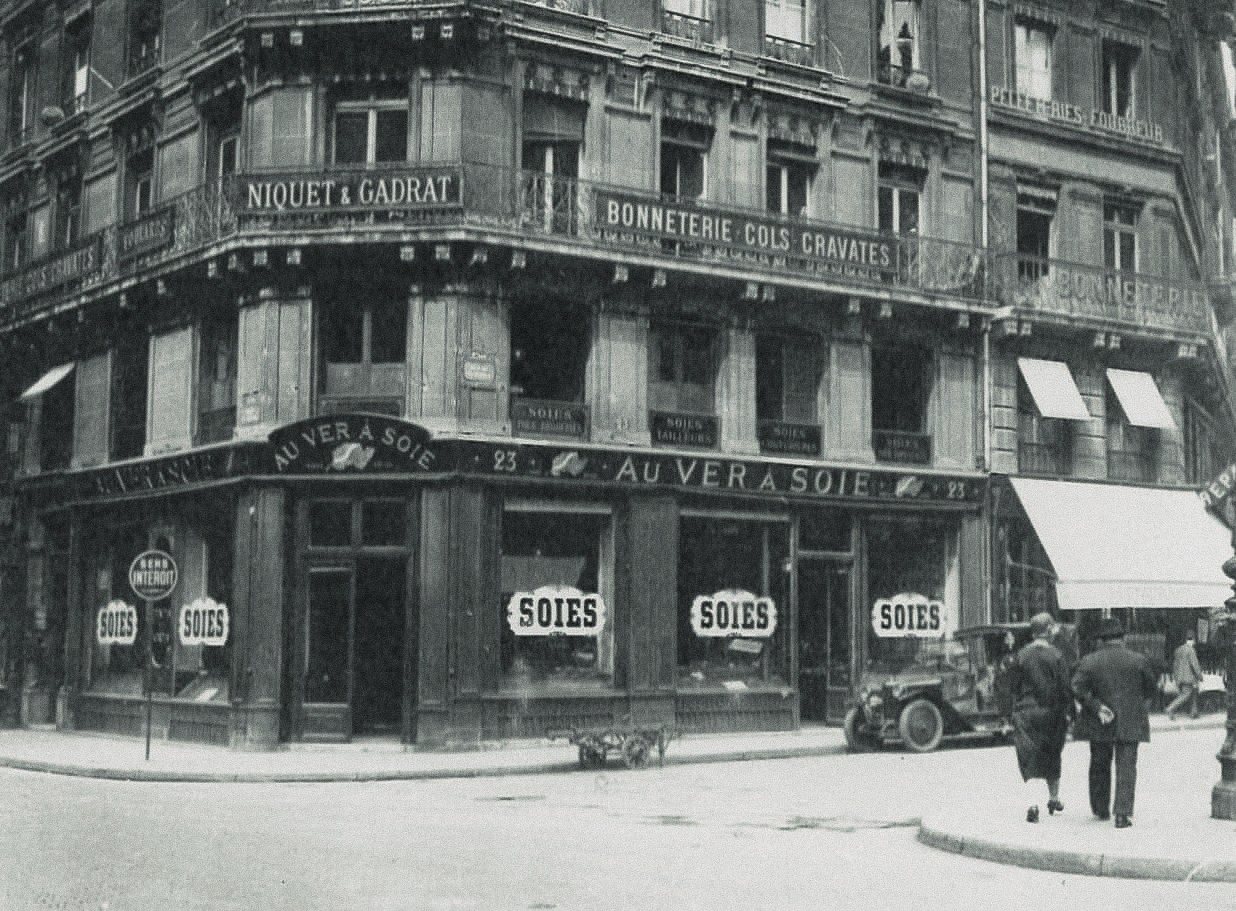
At the beginning of the last century, the guts of the large silkworm larvae, after boiling and stretching, were used to make "gut" lines and fly fishing leaders. Rue Réaumur the famous house "Au ver à soie" still exists today.
The density of impregnated natural silk fly lines is much higher than that of floating plastic lines. As a result, for two lines of equivalent weight balancing the same rod, the natural silk line, with a much thinner diameter, will split the air better, unwind better (form a tighter loop) and “pierce” better in the wind, than the plastic line. Indeed, the buoyancy of modern plastic lines is obtained by the inclusion in the thickness of the plastic coating of hundreds, even thousands of microbubbles of air. For a line with a number greater than 6, this is hardly a problem. On the other hand, for small line numbers, and in particular those increasingly used for fishing difficult trout or especially grayling (No. 2, 3 or 4 lines), the manufacturer must keep a large diameter in order to ensure that the tip floats and includes enough air bubbles.
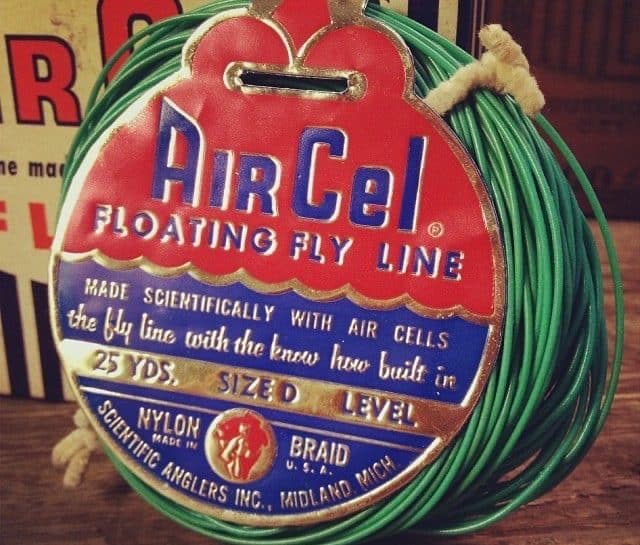
The Air Cel brand, from Scientific Angler, was the first fly line made of plastic. The flotation, as its name indicates, was provided by mini air cells included in the thickness of the plastic.
With a floating plastic line, the snatchers put the trout on the alert.
A large tip diameter means a less discreet landing, which is what good anglers try to remedy by making the leader too long, with the disadvantages that this entails in terms of casting accuracy and hooking. But, in fishing action, a line is not only intended to be laid as gently as possible, which with a minimum of technique is usually done quite well. Then, it will also have to be pulled out of the water. However, if in the numerous literature on the subject, dozens of authors have incriminated a too noisy landing, as a cause of the refusal of the artificial or even of the escape of the fish, very few have worried about the consequences of the pulling out. However, very often with plastic lures, the snatch is disastrous. It is enough to be convinced of this, to observe on a body of water such as a reservoir on a windless day, or on the tail of a pit, the “concussion” that occurs on the surface when a plastic line is pulled out in comparison with a correctly greased natural silk line. Let’s not forget that sounds are entirely and much more quickly transmitted in water than in air, and let’s not doubt that much more than our landings, it’s our snatches that most of the time make trout wake up.
A natural silk line, with a long and fine tip, well greased, will cut like a razor blade the film of the water, whereas a plastic line, because of its thickness, will tend to adhere strongly to the surface (surface tension phenomenon) and will literally tear during the snatch.
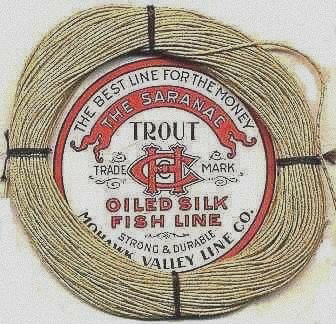
The American brand Mohawk (Mohican), manufactured under the name of Saranac, parallel casting lines for trout and predator fishing.
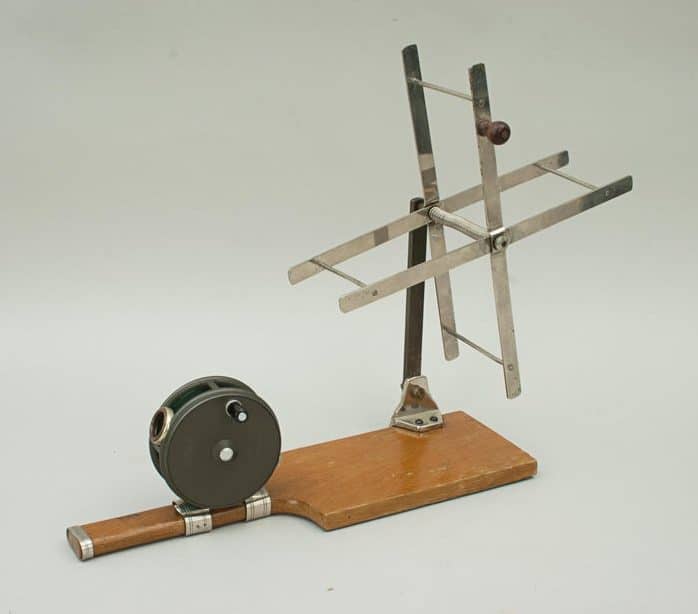
A minor inconvenience of natural silk lines is to roll them up in large coils, at least once a week, to dry them, as shown here on this Hardy brand dryer-reel.

A Cadillac brand line, made of impregnated natural silk, typically American as its name indicates, for fly fishing for salmonids.
The fine point of natural bristles allows the use of a normal length leader (say 2.50 to 3.5 m) but especially whose departure will not exceed 35/100 eme. Hence the advantage in terms of discretion of the presentation, compared to the leaders of strong diameter (braid or monofilament) necessary to balance and extend the thick point of a plastic line. The thinness of the tip combined with the natural flexibility of natural silk braids (once the line is “broken in”), naturally allows for more sinuous, less straight line presentations than with a plastic line. This is a huge advantage that delays the appearance of the unfortunate dragging.
This flexibility of natural silk is moreover, very pleasant in fishing action, the line not keeping the “memory” of its winding on the reel. Finally, whatever the weather, hot or cold, the natural line will remain pleasant to cast and to work with in the left hand. …In cold weather, as is often the case with salmon at the beginning of the season, the plastic lines stiffen and are difficult to reposition (the famous mending of the Anglo-Saxons), while in very hot weather, on the contrary, they soften excessively, tend to make knots and have the consistency of overcooked spaghetti.
In long distance fishing, shadow on big rivers like the Dordogne, but also with salmon, the appearance of “spontaneous” knots (often called wind knots, whereas it is almost always the false casts and not the wind which are at the origin of their formation) is certainly for this same reason of density and suppleness of the natural silk, extraordinarily reduced. When we know that on the best nylons, this type of knot once tightened during the fight with a beautiful fish, can decrease by two thirds the initial resistance of the leader, we understand better that many salmon fishermen swear by their old silks of King Eider or King Fisher.

The famous brand Kingfisher (Martin Pêcheur), manufactured until the mid-sixties very good fly lines in natural silk.
English silks are the best in fly line.
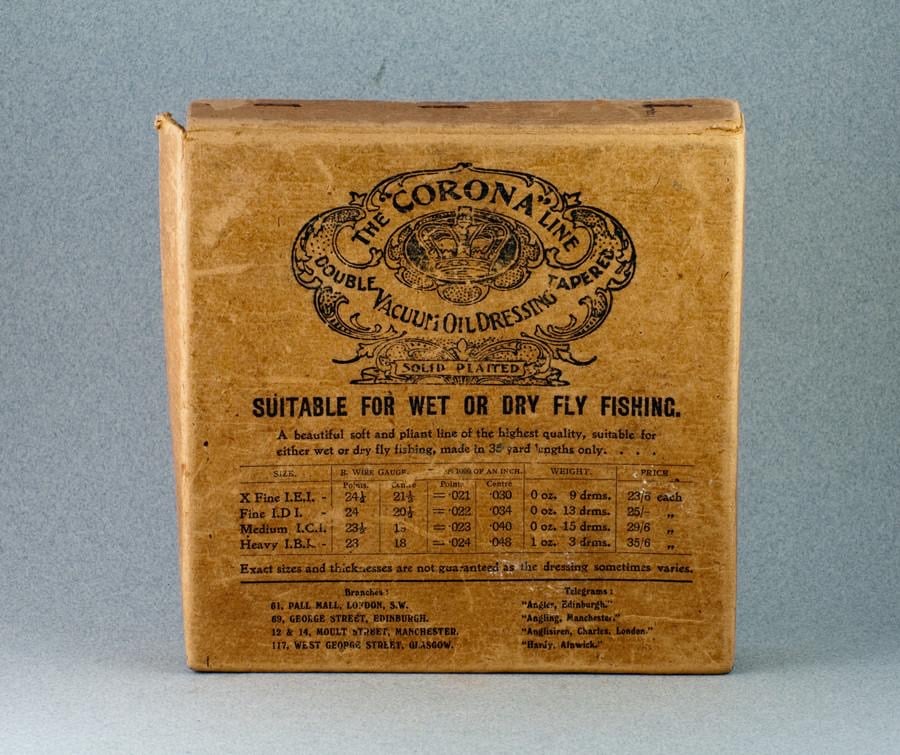
Before the war, Hardy natural silk fly lines were the best available on the market for both trout and salmon.
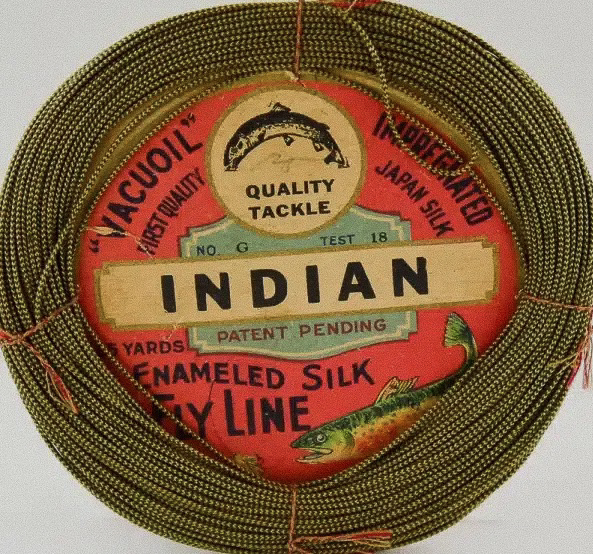
This Japanese natural silk fly line was impregnated with linseed oil under vacuum, for a better flotation.
Many people have criticized natural silk lines for their fragility and especially for the care they need to be given to keep their qualities. Let’s not exaggerate, because unless you beat the water all day long, but then it’s a question of drowned flies, a well greased line, therefore to fish in “dry” on gobages, will require at worst only one re-greasing of the tip during fishing. After each fishing trip, simply take the line out of the reel and dry it by spreading it out for the night in large, falling coils on the back of a chair placed ten or twenty centimeters away from the generally anemic radiator found in the rooms of fishing hotels. The next morning, it is dry and it is enough to re-grease it, so that it floats again perfectly for 4 to 6 hours of use.
A bit of history: The first fly line made of impregnated natural silk.
“I bought, at the price of three francs, a skein of small raw silk string of 70 meters in length. It was sold to me by weight in a wholesale store in the rue Saint-Denis. I knew that as it was, this string could not be used; that it twisted in the air and in the water; that it was not suitable for a quick cast as required by fly fishing. I managed to correct all these defects. For a few cents, a varnish manufacturer gave me a color composed of drying oil, a little ceruse and a green dye. After having hung on a tree trunk one of the ends of my string, I rubbed it strongly and repeatedly with this preparation of which, for that, I poured some drops on a small piece of skin. This work finished, I let, during several days, my string dry in the open air, and, as a result, I found myself possessor, at the total price of 3 fr 50, of two lines of 35 meters each, of a smoothness and a strength which leave nothing to be desired, which have more stiffness than the horsehair itself, and which thrown with the cane, split the air like a stroke.”
Ch. de Massas: “The fisherman with the artificial fly” 1852

The first book dealing with "modern" fly fishing is the one by Charles de Massas published in 1852.


